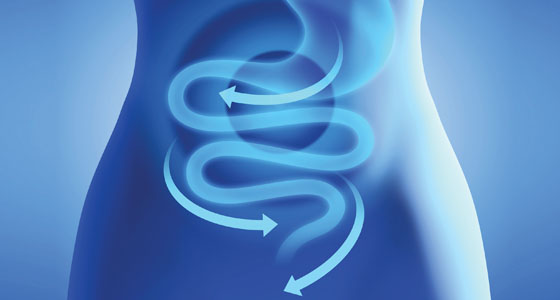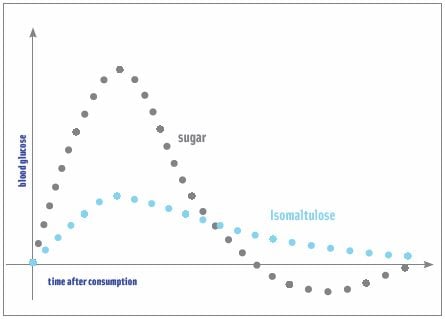Ingredient Solutions for Better Health
How prebiotics and low glycemic carbohydrates can play important roles in preventing or delaying health problems.

The human body is a flexible organism that copes with normal situations and challenges every day. Longer term, the body might be compared to an elastic band that functions perfectly when it’s new but loses elasticity the older it gets. Preventing the elastic band from tearing—totally or partially—and extending its elasticity for as long as possible is the aim when thinking about prevention and fighting the burden of diseases. A healthy and active lifestyle is regarded as the key to healthy aging, and balanced nutrition has a key role to play in this.
According to the United Nations’ World Population Ageing 2009 report, “The number of older people (60+) is expected to exceed the number of children (<15) in 2045 for the first time. In more developed regions, this already happened in 1998.” And a World Health Organization (WHO) report even stated that “… As populations age, annual NCD (noncommunicable disease) deaths are projected to rise substantially, to 52 million in 2030” (WHO, 2010).
Although further scientific study is needed to get a clearer and more detailed picture of what constitutes balanced and healthy nutrition, a lot can now be done to prevent or delay the onset of disease by taking advantage of the wealth of knowledge presently available. It is agreed that the cumulative steps that an individual puts in place to achieve optimum health (i.e., adherence to a healthy and active lifestyle over the course of his or her lifespan) play a role in the quality of physical aging. Society as a whole is beginning to understand the importance of balanced and healthy nutrition from early on.
The Impact of Imbalance
The long-term nature of wrong dietary choices is one of the key factors that health and well-being professionals struggle against. The clinical manifestation resulting from an individual’s unsuitable diet only becomes noticeable after that person has done small things wrong for a long period of time. A case in point is the rise in body weight in the U.S. population from 1980 to 1994. This was due to an intake of only 3.7 kcal above maintenance per day in men and 12.7 kcal above maintenance in women (calculated based on 35-year-old adults) (Khan and Bowman, 1999). It doesn’t take much to cross over from weight maintenance to weight increase. It is estimated that a typical adult gains approximately 2 pounds per year over a lifetime and that eating just a few calories less per day or burning a few more calories could make the difference between a healthy or an unhealthy body weight in later life.
Overweight and obesity, diabetes mellitus, gut-related disorders, osteoporosis, dental disorders, and cardiovascular diseases are the key nutrition-related burdens that grow in importance as age increases. More and more research is showing that by incorporating key ingredients into a balanced diet, diseases can be delayed or prevented in most cases.
One example of this is the choice of macronutrient ingredients, such as prebiotic fibers as well as low glycemic and slowly but fully available carbohydrates. All of these have the potential to be part of the solution for healthy nutrition and counter the burdens of these diseases.
--- PAGE BREAK ---
 The Pluses of Prebiotics
The Pluses of Prebiotics
The place where inulin-type prebiotics show their efficacy is the large intestine. The large intestine is an organ that was underestimated for a long time as it was thought to be no more than the place where feces are made, and that bowel movements/constipation are the key factors to consider. However, today we know that it also plays an important role in our hunger and satiety regulation and that it is a center of inner protection activities. It is the home of the gut microbiota that strongly influences the human organism.
In babies, inulin-type fructans from chicory promote selectively the growth of naturally occurring bifidobacteria so that the composition of the gut microflora of a bottle-fed baby becomes similar to that of a breast-fed baby. A recent scientific study incorporating oligofructose-enriched inulin in infant formula has demonstrated that the use of inulin-type fructans is safe, well tolerated, and has a prebiotic effect in infants during the first four months after birth. The babies involved in the study showed a growth of naturally occurring bifidobacteria due to the addition of inulin-type fructans from chicory (Closa-Monasterola et al., 2013).
In the elderly, researchers have identified specific changes in the balance of digestive microorganisms that are thought to be partly responsible for some of the increased intestinal problems that are all too common later in life (Tuohy, 2007). As people get older, the levels of beneficial bacteria in the intestine tend to decline, putting the elderly at greater risk of gastrointestinal disease and discomfort.

The results of a recent scientific study indicated that the level of bifidobacteria increases significantly in volunteers who were supplemented with inulin-type fructans from chicory root (Norin, 2007; Silvi et al., 2003). Also their bowel habits and general well-being were improved. A particular role of oligofructose-enriched inulin is related to an increase in calcium absorption and an increase in bone mineral density. The mode of action here is that due to the particular type of fructan with short-chain and long-chain components, the fermentation process of the gut microflora is occurring throughout the length of the large intestine and not only in the proximal part. This creates an additional absorption surface together with an acidic environment due to the fermentation by the microbiota, which makes the calcium available for absorption. This increase in bioavailable calcium was demonstrated to reach the bones and increase bone mineral density, opening up still further the possibilities of osteoporosis prevention.
It isn’t only the elderly, the young, and very young who need increased consumption of prebiotic fiber to promote longer-term health. The fact that people in only six out of 27 analyzed countries worldwide manage to achieve the recommended daily intake level of 25 g of dietary fiber clearly indicates the need for higher dietary fiber intake. Fiber-enriched products in combination with fruits, vegetables, and whole grain help to overcome this so-called fiber gap and consequently support digestive health.
How Low Glycemic Carbs Help
Human blood glucose regulation is a sensitive system that might become imbalanced over time if challenged constantly by high glucose loads that need to be regulated. The high prevalence of prediabetes and diabetes conditions worldwide and in particular in Western-type countries shows that this is becoming a common phenomenon.
The key to low glycemic blood glucose response is in the type of carbohydrate used. The glucose supply can be modified, for example, by replacing high glycemic carbohydrates (e.g., glucose, sucrose, maltodextrins, or processed starch as in white bread or boiled potatoes) with low glycemic carbohydrates. Low glycemic carbohydrates tend to be only partially digested, providing reduced energy, compared to fully digestible carbohydrates. However, there is now one carbohydrate that is slowly, but yet also fully, digestible.
This unique disaccharide is isomaltulose. The mode of action of its digestion and absorption makes the difference. The enzymatic cleavage of this disaccharide takes much longer than that of high glycemic carbohydrates like sugar, starches, or maltodextrin. This is reflected in its blood glucose response curve: a slow rise, a low peak, and a steady flow in a plateau-like way. There are no significant peaks and troughs as would be found with the blood glucose response of, for example, sugar. Correspondingly, insulin (the “storage hormone”) levels are low and stay low, allowing the body to use fat as an energy source more easily. These physiological effects of isomaltulose were demonstrated in a number of human intervention studies and open new opportunities for healthy eating.
Holub et al. (2010) have clearly presented the metabolic benefits of isomaltulose, and the results suggest that it may even have beneficial effects on long-term carbohydrate metabolism.
Following their work, this unique carbohydrate has been shown to be a completely available carbohydrate and is very well tolerated, irrespective of its consumption with food or beverages. The slow yet complete intestinal release of isomaltulose leads to a prolonged delivery of energy (i.e., blood glucose). The positive physiological properties are relevant for the general population, including overweight people and those with metabolic syndrome. The results of a recent study by König et al. (2012) also show that the low glycemic characteristics of isomaltulose have a beneficial effect on fat utilization in overweight and obese people.
With the wealth of knowledge and science available to food and drink producers, it is clear to see that there is a vital role that the industry can play in helping populations to maintain active and healthy lifestyles well into old age. A smart choice of ingredients from early on can make all the difference to the future delay or prevention of noncommunicable diseases.
Anke Sentko is Vice President Regulatory Affairs & Nutrition
Communication, BENEO Institute, Mannheim, Germany
([email protected]).
References
Closa-Monasterolo, R. et al. 2013. Safety and efficacy of inulin and oligofructose supplementation in infant formula: Results from a randomized clinical trial. Clin. Nutr. doi:10.1016/j.clnu.2013.02.009.
Holub, I., Gostner, A., Theis, S., Nosek, L., Kudlich, T., Melcher, R., and Scheppach, W. 2010. Novel findings on the metabolic effects of the low glycaemic carbohydrate isomaltulose (Palatinose™). Br. J. Nutr. Published online by Cambridge Univ. Press, March 9.
Khan, L.K. and Bowman, B.A. 1999. Obesity: A major global public health problem. Annu. Rev. Nutr. 19: xii-xvii.
König, D., Theis, S. Kozianowski, G., and Berg, A. 2012. Postprandial substrate utilisation in overweight subjects with the metabolic syndrome following isomaltulose (Palatinose™) ingestion. Nutrition doi.10.1016/j.nut.2011.09.019.
Norin, E. 2007. Intestinal microflora functions in adults and elderly; the EU project ‘Crownalife.’ Nutrafoods 6(1): 19.
Silvi, S., Verdenelli, M., Orpianesi, C., and Cresci, A. 2003. EU project: Crownalife: Functional foods, gut microflora, and healthy ageing. J. Food Eng. 56(2): 195-200.
Tuohy, K. 2007. Inulin-type fructans in healthy aging. J. Nutr. 137: 2590S-2593S.
WHO. 2010. Global Status Report on Noncommunicable Diseases. WHO Press, World Health Organization, Geneva, Switzerland. www.who.int.
